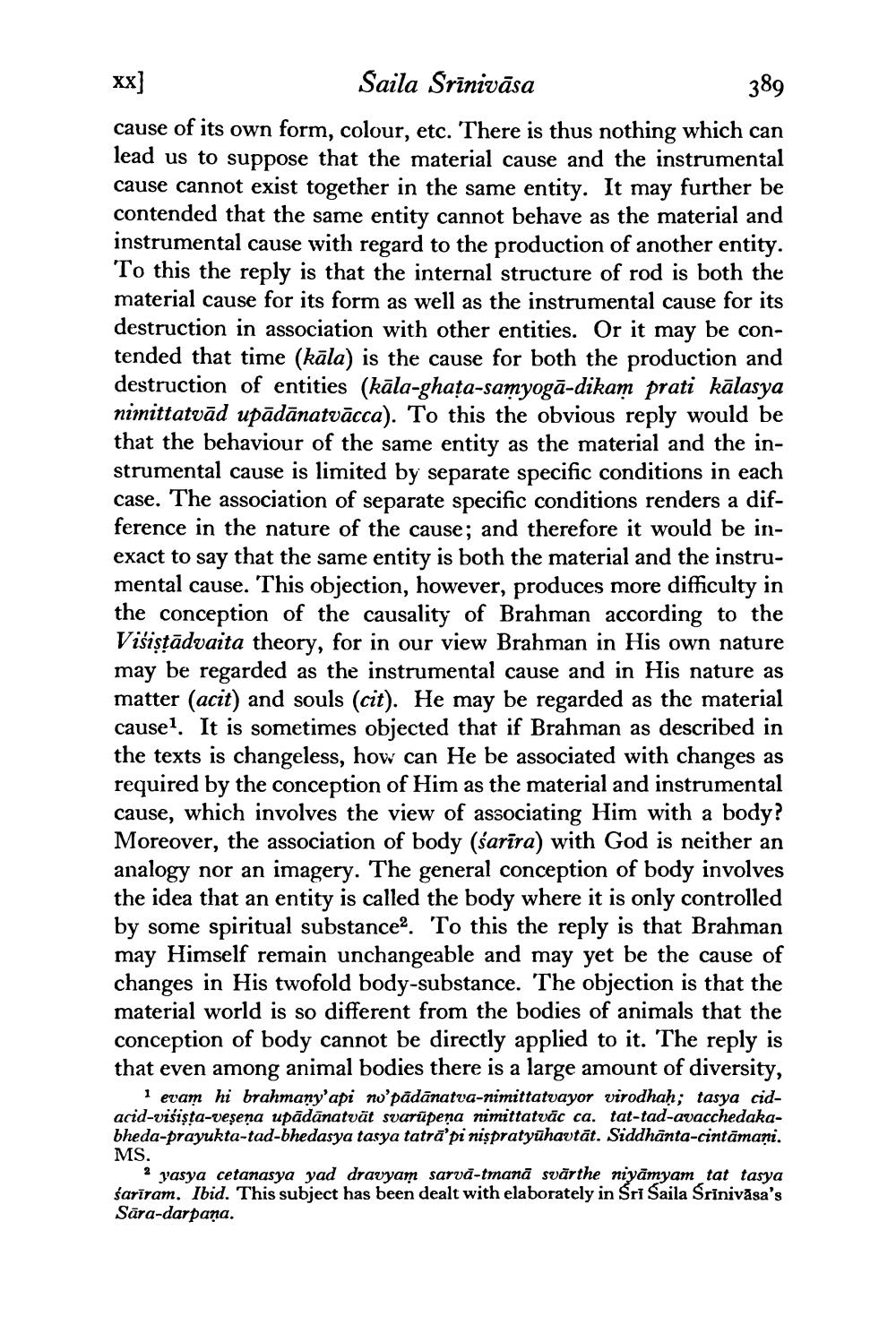________________
xx]
Saila Srinivasa
389
cause of its own form, colour, etc. There is thus nothing which can lead us to suppose that the material cause and the instrumental cause cannot exist together in the same entity. It may further be contended that the same entity cannot behave as the material and instrumental cause with regard to the production of another entity. To this the reply is that the internal structure of rod is both the material cause for its form as well as the instrumental cause for its destruction in association with other entities. Or it may be contended that time (kāla) is the cause for both the production and destruction of entities (kāla-ghaṭa-samyoga-dikam prati kālasya nimittatvād upādānatvācca). To this the obvious reply would be that the behaviour of the same entity as the material and the instrumental cause is limited by separate specific conditions in each case. The association of separate specific conditions renders a difference in the nature of the cause; and therefore it would be inexact to say that the same entity is both the material and the instrumental cause. This objection, however, produces more difficulty in the conception of the causality of Brahman according to the Visiṣṭādvaita theory, for in our view Brahman in His own nature may be regarded as the instrumental cause and in His nature as matter (acit) and souls (cit). He may be regarded as the material cause1. It is sometimes objected that if Brahman as described in the texts is changeless, how can He be associated with changes as required by the conception of Him as the material and instrumental cause, which involves the view of associating Him with a body? Moreover, the association of body (sarira) with God is neither an analogy nor an imagery. The general conception of body involves the idea that an entity is called the body where it is only controlled by some spiritual substance2. To this the reply is that Brahman may Himself remain unchangeable and may yet be the cause of changes in His twofold body-substance. The objection is that the material world is so different from the bodies of animals that the conception of body cannot be directly applied to it. The reply is that even among animal bodies there is a large amount of diversity,
1 evam hi brahmany'api no'pādānatva-nimittatvayor virodhaḥ; tasya cidacid-visista-veşena upādānatvāt svarupena nimittatvāc ca. tat-tad-avacchedakabheda-prayukta-tad-bhedasya tasya tatra'pi niṣpratyūhavtāt. Siddhānta-cintāmaṇi.
MS.
2
yasya cetanasya yad dravyam sarvā-tmanā svarthe niyamyam tat tasya sarīram. Ibid. This subject has been dealt with elaborately in Sri Saila Srinivasa's Sara-darpana.




